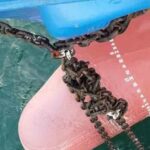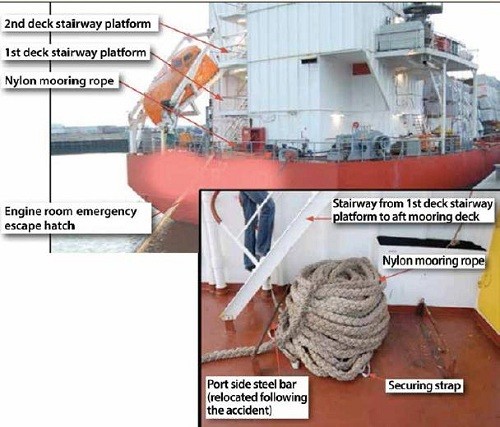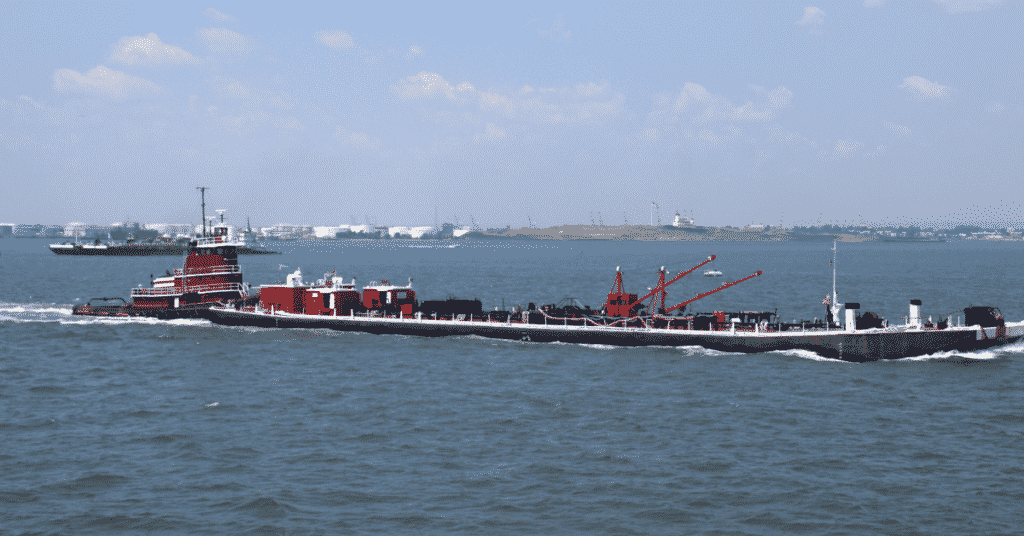Real Life Accident: Insufficient Passage Planning Leads To Bottom Damage Of Vessel
A ro-ro ferry was inbound in a restricted waterway on a heading of 220° at full sea speed (18 knots OTG). The vessel was approximately one cable to starboard of the 220° transit line when the Master ordered an alteration to port to 215° in order to bring the vessel onto the 220º transit line (see figure).
Soon, the vessel crossed the transit and the Master ordered the helmsman to return to a heading of 220°. The vessel did not steady on this heading, as a further alteration to 222° was ordered. Two further alterations to starboard were made in quick succession; to 224° and then to 226°. As the Master ordered the successive alterations to starboard, the chief officer went to the centreline of the bridge to visually assess the vessel’s position. While on the heading of 226°, a noisy shuddering vibration lasting about nine seconds was heard and felt throughout the vessel. The Master slowed the vessel but nothing unusual was seen astern nor were there any alarms. Steering and propulsion were also responding normally so the Master returned the vessel to full sea speed and continued the approach to the harbour.

Once berthed in port, cargo discharge, reloading and a lifeboat drill went ahead as planned. A pre-planned divers’ inspection of the hull also went ahead and divers soon discovered significant bottom damage; the vessel was thereafter withdrawn from service.
The investigation found, among other things, that:
- There had been insufficient passage planning for the voyage; in particular, for the transit through the restricted waterway of the port approaches. For example, the extremely low tide and effect of squat were not properly considered. This resulted in the bridge team being unaware of the limits of safe water available. Despite the bridge team’s apparent good positional awareness, they headed into danger without appreciation of the risk.
- The absence of any alarm, steering and propulsion responding normally, and the Master’s conviction that there had been sufficient depth of water, led to a collective denial of the possibility that the vessel might have grounded.The highly repetitive nature of the ferry’s schedule induced a degree of planning complacency.
- The ECDIS was not utilised effectively as a navigation aid. In particular, the safety contour value was inappropriate, the cross track error alarm was ignored, and the audible alarm was disabled.
- The layout of the central bridge console prevented the chief officer from utilising the ECDIS display to support the Master during pilotage.
Lessons learned
- If you hear loud shuddering noises accompanied by vibrations throughout the ship, you should suspect you have touched bottom even if all else appears normal. Have all tanks sounded as a precaution.
- Beware of complacency – it can creep in when you are most sure of yourself.
- ECDIS is a wonderful tool if used effectively. In particular, learn how to appropriately set the safety contour and safety depth.
Reference: bimco.org
Do you have info to share with us ? Suggest a correction
- Real Life Incident: Vessel Collision in Good Visibility
- Real Life Incident: Severe Injury To Deck Crew While Leaving Berth
- Real Life Incident: Departure Damage in Very Restricted Waterway
- Real Life Incident: Low Situational Awareness Has High Impact Consequence
- Real Life Incident: Fouled Anchor in a Designated Anchorage
- Real Life Incident: Fire On Barge Carrying Scrap Metal Causes $7 Million Worth Of Damage
Latest Case studies Articles You Would Like:
Subscribe To Our Newsletters
By subscribing, you agree to our Privacy Policy and may receive occasional deal communications; you can unsubscribe anytime.
Web Stories




















